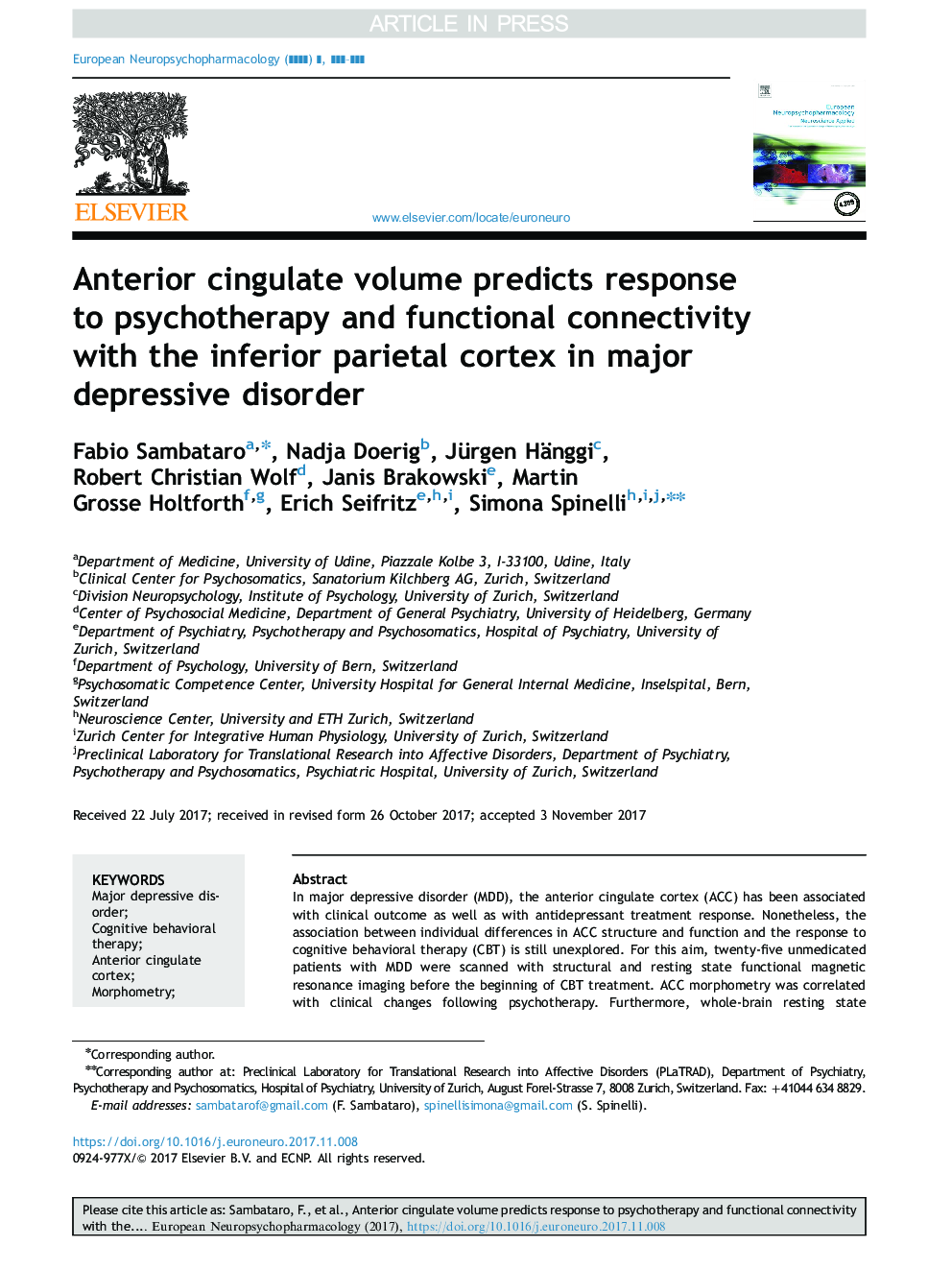| Article ID | Journal | Published Year | Pages | File Type |
|---|---|---|---|---|
| 6790955 | European Neuropsychopharmacology | 2018 | 11 Pages |
Abstract
In major depressive disorder (MDD), the anterior cingulate cortex (ACC) has been associated with clinical outcome as well as with antidepressant treatment response. Nonetheless, the association between individual differences in ACC structure and function and the response to cognitive behavioral therapy (CBT) is still unexplored. For this aim, twenty-five unmedicated patients with MDD were scanned with structural and resting state functional magnetic resonance imaging before the beginning of CBT treatment. ACC morphometry was correlated with clinical changes following psychotherapy. Furthermore, whole-brain resting state functional connectivity with the ACC was correlated with clinical measures. Greater volume in the left subgenual (subACC), the right pregenual (preACC), and the bilateral supragenual (supACC) predicted depressive symptoms improvement after CBT. Greater subACC volume was related to stronger functional connectivity with the inferior parietal cortex and dorsolateral prefrontal cortex. Stronger subACC-inferior parietal cortex connectivity correlated with greater adaptive rumination. Greater preACC volume was associated with stronger functional connectivity with the inferior parietal cortex and ventrolateral prefrontal cortex. In contrast, greater right supACC volume was related to lower functional connectivity with the inferior parietal cortex. These results suggest that ACC volume and its functional connectivity with the fronto-parietal cortex are associated with CBT response in MDD, and this may be mediated by adaptive forms of rumination. Our findings support the role of the subACC as a potential predictor for CBT response.
Keywords
Related Topics
Life Sciences
Neuroscience
Biological Psychiatry
Authors
Fabio Sambataro, Nadja Doerig, Jürgen Hänggi, Robert Christian Wolf, Janis Brakowski, Martin Grosse Holtforth, Erich Seifritz, Simona Spinelli,
